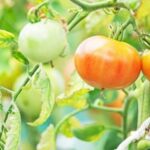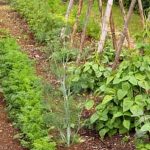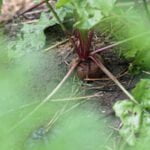Welcome to the world of flower and vegetable gardening, where beauty and productivity go hand in hand. In this detailed illustrated guide, we will explore the importance of incorporating flowers into your vegetable gardens. From enhancing growth and aesthetics to attracting beneficial pollinators, flowers play a crucial role in creating vibrant and productive garden spaces.
Why are flowers important for vegetable gardens? Well, besides adding a pop of color and visual appeal, flowers bring a range of benefits to your veggie patch. One significant advantage is companion planting, where specific flowers are strategically planted alongside vegetables to promote symbiotic relationships. By selecting the right pairings, you can naturally control pests, improve soil health, increase yields, and even enhance flavor profiles.
Attracting pollinators is another critical function of flowers in vegetable gardens. Bees, butterflies, and other insects are essential for fertilizing plant blossoms and ensuring fruitful harvests. Through their nectar-rich blooms and enticing fragrances, certain flowers act as beacons that beckon these helpful creatures into your garden space. With an abundance of pollinators visiting your veggies, you can expect increased yields and healthier plants.
In this guide, we will delve deeper into why flowers are vital in vegetable gardens. We will also discuss how to choose the right flowers that complement your vegetables both in terms of growth requirements and visual harmony. Additionally, you will find valuable information on companion planting techniques to maximize the benefits of incorporating flowers into your veggie patch.
So grab your gardening gloves and let’s embark on a journey through the colorful world of flower-filled vegetable gardens. Get ready to discover how these small yet significant additions can transform your garden space into a thriving haven for both flora and fauna alike.
Choosing the Right Flowers for Vegetable Gardens
When it comes to creating a successful vegetable garden, incorporating flowers is not just about adding a splash of color and beauty. The right flowers can play a crucial role in enhancing the growth and overall health of your vegetables. In this section, we will discuss the importance of selecting the right flowers for your vegetable garden and provide you with some useful tips on making the right choices.
The Importance of Selecting Complementary Flowers
Choosing flowers that complement your vegetables in terms of growth and aesthetics is essential for maintaining a harmonious garden. Certain flower varieties can act as natural companions to specific vegetables, providing them with additional benefits such as better pollination or protection from pests. For example, marigolds are known to repel aphids while attracting beneficial insects like ladybugs, which are natural predators of aphids. This makes marigolds an excellent choice to plant alongside cabbage or other brassicas.
Factors to Consider When Selecting Flowers
When selecting flowers for your vegetable garden, there are several factors that you should consider. First and foremost, consider the sun exposure in your garden. Some flowers prefer full sun conditions, while others thrive in partial shade. Ensure that the flowers you choose will thrive in the available sunlight. Additionally, pay attention to soil conditions. Different flowers have different soil preferences, so make sure they align with the soil conditions in your vegetable garden.
Some popular flower varieties that are known to thrive in vegetable garden settings include zinnias, cosmos, nasturtiums, and sunflowers. These flowers are not only beautiful but also attract pollinators like bees and butterflies which play a crucial role in improving vegetable yields.
By carefully selecting complementary flowers and considering factors such as sun exposure and soil conditions when choosing them for your vegetable garden, you can create a vibrant and thriving ecosystem that will benefit both your plants’ growth and the overall beauty of your garden.
Companion Planting
Companion planting is a gardening practice that involves growing different plants together to maximize their benefits. In the context of vegetable gardens, companion planting with flowers can greatly enhance the overall health and productivity of the garden. By strategically selecting certain flowers, gardeners can attract beneficial insects, repel pests, and improve pollination for better vegetable yields.
One key aspect of companion planting is choosing flowers that repel pests or attract beneficial insects. Some flowers release fragrances or natural compounds that repel harmful insects, effectively reducing the need for chemical pesticides. For example, marigolds are known to repel nematodes, which are microscopic worms that can damage the roots of vegetables like tomatoes and peppers.
On the other hand, some flowers are excellent at attracting beneficial insects such as bees and butterflies. These pollinators play a crucial role in ensuring successful fruit set in many vegetables. Flowers with open blooms and bright colors, such as zinnias and asters, are particularly attractive to pollinators. By incorporating these flowers into the vegetable garden, gardeners can increase pollinator activity and ultimately improve crop yields.
Intercropping is another technique used in companion planting where flowers are grown alongside specific vegetables to enhance growth and yield. Certain flowers have a symbiotic relationship with select vegetables, helping them thrive by providing shade or acting as living mulch.
For instance, tall sunflowers can provide shade for lettuce or leafy greens during hot summer months. Additionally, low-growing groundcover flowers like nasturtiums can act as living mulch to conserve soil moisture and suppress weed growth around taller vegetables like tomatoes.
When it comes to maximizing the benefits of companion planting through flower selection, it’s important to consider factors such as sun exposure and soil conditions. Different flower varieties have specific sunlight requirements ranging from full sun to partial shade. Understanding these needs will help determine which areas of the garden are suitable for various flower types.
Soil conditions are also crucial, as some flowers prefer well-drained soil while others tolerate more moisture. Conducting a soil test can provide valuable information about the pH level and nutrient content of the soil, helping gardeners select flowers that thrive in specific conditions.
Planning and Designing a Flower and Vegetable Garden Layout
When it comes to creating a flower and vegetable garden, careful planning and design are essential for optimal beauty and functionality. The layout of your garden can greatly impact the overall aesthetic appeal and success of your plants. In this section, we will discuss how to plan and design a flower and vegetable garden layout that is both visually appealing and practical.
The first step in planning your garden layout is selecting the right location. Most vegetables require at least 6-8 hours of direct sunlight per day, so choose an area that receives ample sunlight. It is also important to consider factors such as soil drainage, access to water sources, and protection from wind or extreme weather conditions.
Once you have chosen the location, estimate the space requirements for your flower and vegetable beds. Consider the size of each plant at maturity, as well as any trellises or stakes that may be needed for support. Keep in mind that certain plants may have specific spacing requirements to ensure proper air circulation and prevent diseases.
To create visually appealing combinations of flowers and vegetables, think about color schemes that complement each other. You can group plants with similar colors together or create contrasting combinations for added visual interest. Additionally, consider incorporating focal points such as tall flowering plants or decorative structures like arbors or birdbaths.
Here are some tips for designing an eye-catching flower and vegetable garden layout:
1. Use raised beds: Raised beds not only add visual interest but also provide better drainage for your plants.
2. Create pathways: Installing walkways between beds makes it easier to move around the garden while adding structure to the design.
3. Plant in blocks: Instead of planting vegetables in rows, try planting them in blocks or clusters for a more visually striking arrangement.
4. Mix flowers with vegetables: Interplanting flowers throughout your vegetable beds not only adds beauty but also attracts beneficial insects for natural pest control.
5. Consider vertical gardening: Utilize trellises, arches, or hanging baskets to maximize space and create a vertical dimension to your garden.
By following these tips and considering the needs of your plants, you can create a well-planned and aesthetically pleasing flower and vegetable garden layout. The next section will provide step-by-step instructions on how to cultivate flowers and vegetables together, ensuring successful growth and development.
Cultivating Flowers and Vegetables Together
Planting and caring for flowers and vegetables together in a garden requires careful attention to ensure successful growth and development. By following proper techniques, gardeners can create a harmonious coexistence between the two.
To start, it is essential to prepare the soil properly before planting. Clear out any weeds or debris and loosen the soil to provide a good growing environment for both flowers and vegetables. Adding compost or organic matter can help improve soil fertility and structure.
When it comes to planting, spacing is crucial. Be mindful of each plant’s specific requirements and leave adequate space between them to prevent overcrowding. This allows proper air circulation and reduces the risk of disease spread. Additionally, consider companion planting combinations that promote growth and deter pests, such as planting marigolds near tomatoes to repel insects.
Watering is another critical aspect of caring for flower and vegetable gardens. Ensure that plants receive sufficient moisture without overwatering, as this can lead to root rot or other issues. Monitor soil moisture levels regularly and adjust your watering schedule accordingly.
Fertilizing is necessary for healthy plant growth, but it is essential to understand the nutrient needs of both flowers and vegetables. Use organic fertilizers or compost to provide a balanced source of nutrients that will benefit both types of plants.
Lastly, staking plants may be necessary to support their growth and prevent damage from heavy rain or wind. Use bamboo stakes or cages to provide stability for taller plants like tomatoes or sunflowers.
By following these planting and care tips, gardeners can cultivate an abundant flower and vegetable garden where both types of plants thrive together. Remember to monitor plant health regularly, address any issues promptly, and enjoy the beauty and productivity of your combined garden.
Benefits of Flowers in Vegetable Gardens
Flowers play a crucial role in vegetable gardens, offering benefits that extend beyond aesthetics. While the visual appeal of flowers is undeniable, their presence in a vegetable garden can enhance both the health and productivity of the entire space. By attracting beneficial insects, improving soil fertility, and promoting biodiversity, flowers contribute to a thriving and sustainable garden ecosystem.
Improved Soil Fertility and Structure
One of the key benefits of incorporating flowers into your vegetable garden is their ability to improve soil fertility and structure. Flowers naturally add organic matter to the soil as they shed leaves, petals, and stems. As this organic matter decomposes, it enriches the soil with essential nutrients and improves its overall structure.
Certain flower varieties are particularly effective at fixing nitrogen in the soil through a symbiotic relationship with bacteria. Nitrogen-fixing flowers such as clover or sweet peas convert atmospheric nitrogen into a form usable by other plants. This not only reduces the need for synthetic fertilizers but also enhances plant growth and helps prevent nutrient deficiencies.
Furthermore, the extensive root systems of many flowering plants aerate the soil, promoting better drainage and preventing compaction. This allows water and nutrients to penetrate more effectively to reach the roots of both flowers and vegetables.
Attracting Beneficial Insects for Pollination and Pest Control
Flowers are renowned for their ability to attract pollinators such as bees, butterflies, or hummingbirds. These beneficial insects play a vital role in the pollination process, transferring pollen from one flower to another, resulting in fertilization and fruit production in many vegetables.
By integrating specific flowers known for their attractive qualities to pollinators into your vegetable garden layout, you can increase pollinator visits significantly. Some popular choices include lavender, marigolds, or sunflowers.
Additionally, certain flowers have properties that repel pests or attract beneficial insects that act as natural predators against common garden pests. For instance, planting nasturtiums alongside vegetables can deter aphids, while attracting ladybugs that feed on these destructive pests. Similarly, planting dill or parsley near tomatoes can lure beneficial insects such as lacewings or predatory wasps that prey on tomato hornworms and other harmful insects.
Promoting Biodiversity and Ecological Balance
Incorporating flowers into your vegetable garden promotes biodiversity, creating a more resilient and ecologically balanced ecosystem. By attracting a variety of insects and birds, flowers enhance the diversity of species present in the garden.
This increased biodiversity can help control pests naturally. Predatory insects attracted to flower nectar will prey on common garden pests, reducing the need for chemical pesticides. Furthermore, diverse plant species in the garden create habitats for a range of insect species, including those that act as decomposers and contribute to nutrient cycling.
In addition to pest control benefits, promoting biodiversity through flower inclusion also helps maintain long-term soil health. Different plants have different root structures and nutrient requirements which lead to varied nutrient uptake and release patterns in the soil. This enhances crop rotation possibilities in the vegetable garden, improving overall soil fertility while reducing disease incidence in plants.
By harnessing these benefits beyond aesthetics, your vegetable garden can become a thriving ecosystem where flowers and vegetables support each other’s growth while contributing to a more sustainable gardening practice.
Remember to keep these benefits in mind when selecting flowers for your vegetable garden and consider incorporating aspects of companion planting discussed earlier for even greater rewards.
Troubleshooting Common Issues in Flower and Vegetable Gardens
In any garden, it is common to encounter issues and challenges, and flower and vegetable gardens are no exception. When growing flowers and vegetables together, there may be specific problems that arise due to the unique dynamics between these two types of plants. However, with proper knowledge and techniques, these issues can be easily addressed. Here are some common problems that may occur in flower and vegetable gardens, along with troubleshooting tips and solutions:
- Competition for resources: Flowers and vegetables often require similar resources such as water, nutrients, and sunlight. This can lead to competition if not managed properly. To avoid this issue, ensure adequate spacing between plants to allow for proper growth and nutrient uptake. Additionally, consider using organic mulch around plants to retain moisture and suppress weeds.
- Disease susceptibility: Different flowers and vegetables have varying degrees of susceptibility to diseases such as powdery mildew or blight. To minimize the risk of disease outbreaks, practice good garden hygiene by removing any diseased or infected plant material promptly. Proper crop rotation is also important to prevent the buildup of pathogens in the soil.
- Nutrient deficiencies: Depending on the composition of your soil, certain nutrients may be lacking for optimal plant growth. Conduct a soil test to determine any nutrient deficiencies and amend accordingly with organic fertilizers or compost. Also, consider incorporating companion plants that can help improve soil fertility through nitrogen fixation or nutrient accumulation.
- Pest control: Pests can pose a significant threat to both flowers and vegetables in the garden. One effective way to control pests naturally is by introducing beneficial insects that prey on common garden pests like aphids or caterpillars. Plants such as marigolds or calendulas are known to attract beneficial insects like ladybugs or hoverflies.
By proactively addressing these common issues in flower and vegetable gardens, you can ensure a harmonious coexistence between your plants while maximizing their health and productivity. Remember that prevention is key to maintaining a thriving garden, so it is advisable to practice good gardening practices such as regular observation, proper watering, and timely intervention when necessary. With patience and diligence, you can overcome any challenges and create a successful flower and vegetable garden.
Inspiring Ideas and Combinations for Flowers and Vegetables in Garden Design
When it comes to designing a flower and vegetable garden, the possibilities are endless. By combining flowers and vegetables in a thoughtful and strategic way, you can create a visually stunning and productive garden that will bring joy to both your eyes and your taste buds. In this section, we will explore inspiring ideas and combinations for flowers and vegetables in garden design, providing you with the inspiration you need to create your own unique masterpiece.
One idea for combining flowers and vegetables is to create themed garden beds. For example, you could plant a salsa garden bed with tomatoes, peppers, cilantro, and marigolds. The bright reds and yellows of the peppers and tomatoes will be enhanced by the vibrant orange of the marigolds, creating an eye-catching display.
Another option is to create a cottage-style garden bed with a mix of colorful flowers such as zinnias, roses, daisies, and delphiniums along with heirloom carrots, rainbow chard, or purple kale. This combination creates a whimsical look that is both beautiful and bountiful.
In addition to themed garden beds, consider incorporating vertical elements into your design. Use trellises or arbors to support climbing flowers such as morning glories or sweet peas alongside vining vegetables like cucumbers or beans. This not only adds height and dimension to your garden but also maximizes the use of space.
Lastly, don’t forget about container gardening. Combining flowers and vegetables in containers allows for flexibility in placement and provides an opportunity for experimentation with different color combinations. Plant vibrant petunias or geraniums alongside herbs like basil or thyme for a striking contrast in both color and texture.
Remember, these are just a few ideas to get you started on creating your own inspiring flower and vegetable garden designs. Feel free to experiment with different combinations based on your personal preferences and the specific needs of your plants. The key is to have fun and let your creativity shine while creating a beautiful and productive garden that brings you joy throughout the growing season.
Conclusion
In conclusion, creating a vibrant and productive flower and vegetable garden is a rewarding endeavor that offers numerous benefits. Throughout this detailed illustrated guide, we have explored the significance of incorporating flowers into vegetable gardens and the benefits of companion planting. We have also discussed how to choose the right flowers for vegetable gardens, maximize their benefits through companion planting, plan and design a garden layout, cultivate flowers and vegetables together, address common issues, and find inspiration for garden designs.
By including flowers in your vegetable garden, you not only enhance its aesthetic appeal but also promote better growth and yield. Flowers play a crucial role in attracting pollinators, such as bees and butterflies, which are essential for successful fruiting and higher vegetable yields. Additionally, certain flowers act as natural pest repellents or attract beneficial insects that control pests in an eco-friendly manner.
It is important to carefully select the right flowers for your vegetable garden based on factors like sun exposure and soil conditions to ensure optimal growth. Planning and designing the layout of your garden with a combination of flowers and vegetables will help create visual interest while maximizing space utilization. By following proper planting techniques and providing appropriate care for both flowers and vegetables, you can maintain a healthy and thriving garden.
We hope that this detailed illustrated guide has provided you with valuable insights into creating your own vibrant and productive flower and vegetable garden. By applying the information shared here, you can experience the joy of growing beautiful blooms alongside bountiful harvests. Experimenting with different combinations of flowers and vegetables in your garden design will allow for personalization while enjoying all the benefits that come with their coexistence.
So go ahead, start planning your flower and vegetable garden today. With careful consideration of flower selection, companion planting techniques, proper care practices, troubleshooting knowledge, and creative design ideas showcased here, you can turn your garden into a flourishing paradise that delights both the eyes and taste buds. Happy gardening.

If you’re looking to get into vegetable gardening, or are just looking for some tips on how to make your current garden better, then you’ve come to the right place! My name is Ethel and I have been gardening for years. In this blog, I’m going to share with you some of my best tips on how to create a successful vegetable garden.





